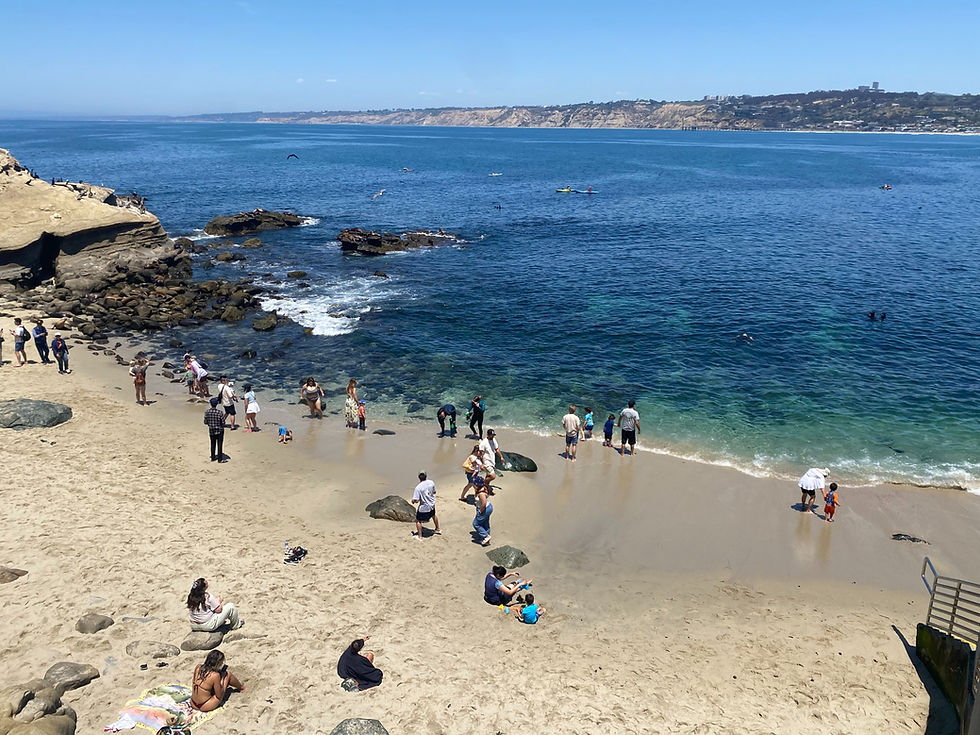Rip Currents in San Diego: Safety & Survival Tips
- San Diego Beach Review
- Oct 15
- 3 min read

Disclosure: This post contains affiliate links, which means we may earn a small commission if you make a purchase through these links, at no extra cost to you. As an Amazon Associate, we earn from qualifying purchases. All recommended products are carefully selected to enhance your beach experience. Click here to learn more.
San Diego’s beaches are world-famous, but ocean currents, particularly rip currents, pose a serious risk to swimmers. Other currents, like longshore currents (which sweep you sideways along the beach) and tide-driven currents (strong flows caused by rising/falling tides), can also catch visitors off guard.
Understanding how to identify currents, stay safe, and survive if caught is essential for swimmers, surfers,
and families enjoying the ocean.
This guide includes:
Rip, longshore, and tide-driven currents
How to spot dangerous areas
Survival strategies
Safety gear suggestions
Be sure to subscribe to our emails to stay updated on the San Diego coast.

Types of Ocean Currents to Know
Current Type | Description | How to Recognize | Survival Tip |
Rip Currents | Fast-moving channels pulling water away from shore | Foam moving seaward, gaps in breaking waves, debris lines | Float, swim parallel to shore, signal for help |
Longshore Currents | Water moving parallel to shore from angled waves | Water moving sideways along the beach | Swim diagonally toward shore |
Tide-Driven Currents | Strong flows caused by rising/falling tides | Fast water near narrow channels, inlets, or jetties | Float, stay calm, signal for help |
How to Spot Dangerous Currents
Before entering the water:
Foamy or choppy water moving seaward → rip current
Discolored water or debris lines → sand being pulled out
Calm-looking gaps in breaking waves → potential rip channels
Water moving sideways along the beach → longshore current
Pro Tip: Observing the surf for a few minutes can prevent accidents. Even experienced swimmers can be caught if they ignore warning signs.
Rip Current Safety Tips
Swim Near Lifeguards – Stay within view of a lifeguard tower.
Check Surf Conditions – Observe flags, warnings, and surf reports.
Use Safety Gear – Life vests, swim buoys, waterproof whistles, and wetsuits provide flotation, visibility, and warmth.
Go With a Buddy – Swimming with someone increases safety and speeds rescue.
How to Survive a Rip Current
Stay Calm – Panicking wastes energy.
Float or Tread Water – Keep your head above water.
Swim Parallel to Shore – Rip currents are usually narrow.
Signal for Help – Wave or blow a whistle if lifeguards are nearby.
Do Not Swim Against the Current – Fighting it straight to shore will exhaust you.
For longshore currents, swim diagonally toward shore. For tide-driven currents, float and signal for help.
Safety Gear Recommendations
The following gear can be great for water sports and activities such as paddleboarding, kayaking, swimming, and more.
Gear | Purpose | Link |
Life Vest / PFD | Keeps swimmers afloat in strong currents | |
Swim Buoy | Provides flotation + visibility | |
Wetsuit / Rash Guard | Adds warmth & buoyancy | |
Surfboard / Bodyboard | Can serve as flotation |

See our Guide to Summer in San Diego for more information on safety, beach protocols, and what you can expect at the beaches during the busiest time of year.
In order to stay safe, it's also important to monitor the water quality at San Diego beaches to ensure it's safe for swimming before you get in.
You can make it a great beach day by staying updated on safety precautions and the best family tips for visiting the beaches here.
FAQ – Rip Currents & Ocean Safety in San Diego
Q: How common are rip currents in San Diego?
A: Year-round, most frequent in summer and early fall.
Q: Can beginners spot rip currents?
A: Yes! Look for foam moving seaward, debris lines, and calm-looking gaps. Lifeguards can help identify them.
Q: What should I do if caught in a longshore current?
A: Swim diagonally toward shore rather than fighting the current straight in.
Q: Are some beaches safer than others?
A: Beaches with lifeguard coverage and gentle slopes, like Coronado Central Beach, La Jolla Shores, or Moonlight State Beach, are generally safer.
Q: Do flotation devices help?
A: Yes. Life vests, swim buoys, and surfboards keep you afloat and visible to rescuers.
Be sure to subscribe for more information and updates related to the San Diego coast.







Comments